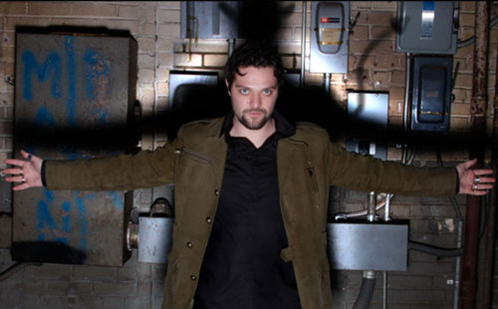The shots used of them are mid-shots, and they are all making eye contact, building a relationship with the reader, despite the fact that the band look quite dangerous; particularly with Jared's pose of his jacket over his shoulder, making the band seem 'badass' and powerful, linking to the surface meaning of the album title "This Is War" as 30 Seconds To Mars are obviously not promoting war itself.
The timeline at the side of the line is effective for the reader, despite the fact that it includes a couple of pictures from things that Jared Leto has starred in such as "Requiem for a Dream" which is in a way a positive thing as it has a wider range of content but may be a negative thing as it may appear to focus on Jared Leto, rather than the band as a whole.
The interview includes taboo terms such as in the plug when it quotes Jared saying "There were many, many fucking brutal days." This may indicate that the magazine's target audience is not a younger one, as there is older content included.
The interrogatives from the interviewer are generally those which people who love 30 Seconds To Mars would want to know and are structured like this, appealing to the reader as it is as though they are answering them. The language used is laid back and partially informal but intellectual and there are a range of sentences included.
Classic Rock. There is just one image one this double page spread which takes up the entire left page and almost a third of the next page, but despite the image being very large, it doesn’t affect the writing. Because of the large image, the double page spread mostly consists of this with just a couple of columns for text.
The colour palette used is black and white; the band are dressed in dark colours which, along with the headline in bold black, greatly contrasts with the white background and makes the magazine more neat and simple. The colours used also could link to the title of the magazine "Classic Rock" as black and white are generally quite calm and characteristic when used together.
Adding to the simplicity is the short and clear headline of "Fiends Reunited", this is a play on words and contrast of the usual "Friends Reunited", making the band seem darker and dangerous. The font also stays pretty much the same on the entire double page spread, which makes it easier to read.
The register and tone of this interview is also very laidback and informal, linking to the genre and content of the magazine, and certain things suggest that the magazine is aimed at an older audience. For example smoking is mentioned and the language isn't seen as suitable for younger people.
Adding to the simplicity is the short and clear headline of "Fiends Reunited", this is a play on words and contrast of the usual "Friends Reunited", making the band seem darker and dangerous. The font also stays pretty much the same on the entire double page spread, which makes it easier to read.
The register and tone of this interview is also very laidback and informal, linking to the genre and content of the magazine, and certain things suggest that the magazine is aimed at an older audience. For example smoking is mentioned and the language isn't seen as suitable for younger people.






